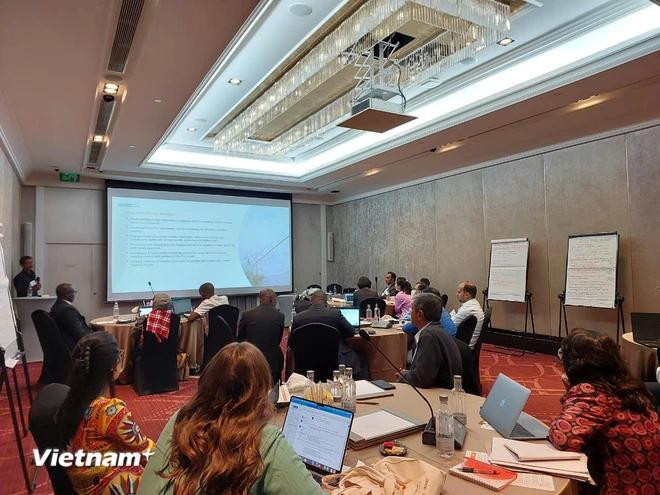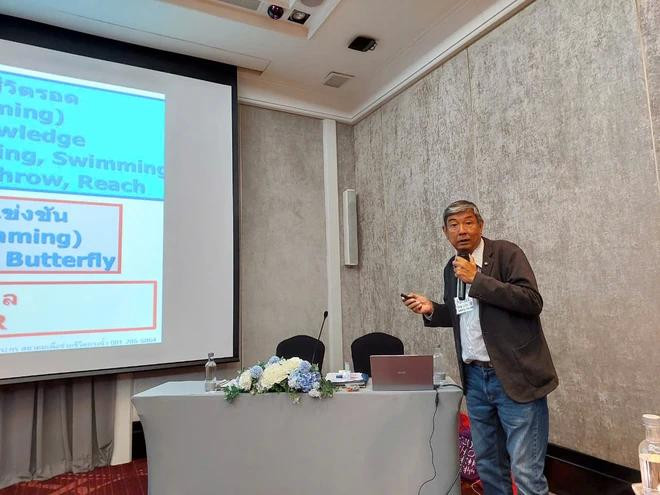Hanoi (VNA) - Drowning deaths can be significantly reduced when communication and education efforts are effectively implemented to raise public awareness on survival swimming skills, according to experts.
After Typhoon Yagi hit several Southeast Asian nations in early September, water levels have remained high, posing the risk of drowning for children and teenagers. Many children who know how to swim still drown, and there are instances of drowning when attempting to rescue others. This issue is prevalent in many developing countries, including Vietnam.
Therefore, relevant authorities have emphasised the need to increase communication and awareness to prevent drowning and help people acquire essential life skills to protect themselves and assist those around them.
This issue was raised at a recent workshop on “Toolkit for Journalists on Drowning Prevention” in Thailand, which drew the participation of 20 journalists from Bangladesh, India, Thailand, Uganda, and Vietnam.
Approximately 236,000 people die from drowning each year, over 90% of which occur in low- and middle-income countries.
Doan Thu Huyen, Country Director for the Campaign for Tobacco-Free Kids, which collaborates on a drowning prevention project for children in Vietnam, stated that while the number of child drowning fatalities has decreased in recent years, it remains one of the top ten causes of death among children in Vietnam.

According to a report from the Ministry of Labour, Invalids and Social Affairs, between 2015 and 2020, an average of nearly 2,000 children died from drowning each year in Vietnam. The child drowning rate in Vietnam is higher than that of countries in the Western Pacific region and is 10 times higher than in developed nations.
Children in rural areas are twice as likely to drown compared to those in urban areas, with 55% of drowning victims coming from poor households in rural regions.
Huyen noted that drowning not only leave irreplaceable pain for the victims' families but also represent a loss for society. For non-fatal drowning incidents, children often suffer long-term health consequences, and the high medical care costs can become a burden for their families.
With the support of Bloomberg Philanthropies, the Global Health Advocacy Incubator (GHAI) under the Campaign for Tobacco-Free Kids has developed the Toolkit for Journalists on Drowning Prevention. The goal is to help editors and reporters understand the issue of drowning, prevention solutions, and the crucial role of communication in driving action.
Jennifer Patterson, Communications Director at GHAI, affirmed that drowning is preventable through practical measures such as survival swimming training, awareness and education, enhanced child care, and the installation of barriers and warning signs.
Communication underpins public awareness and encourages participation in relevant programmes. According to GHAI's survey on free swimming classes, the majority of parents (91.7%) expressed satisfaction, and 82.1% indicated their willingness to co-pay for these classes. These figures demonstrate public support, which is essential for scaling up safe swimming programmes.
Patterson stated that the combination of real survey data and personal stories can persuade local leaders to commit to long-term investment in drowning prevention efforts.

Adisak Suvanprakorn, Secretary-General of the Thai Life Saving Society, emphasised that even children with proficient swimming skills can still drown. Therefore, teaching children survival skills in water involves helping them overcome their fear of water and learn how to breathe and float at any depth. Once they are skilled in swimming in a pool, they should then develop their abilities in ponds, lakes, and oceans, learn teamwork in the water, and how to rescue others./.




























